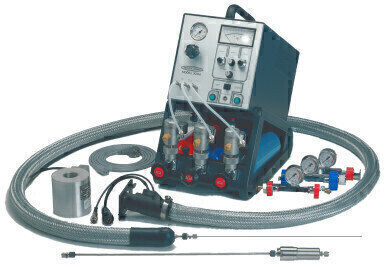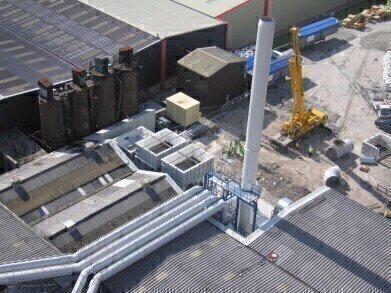Air Monitoring
Curing Carpet Underlay Emissions
Mar 04 2011
The EU Solvent Emissions Directive is helping to drive down Volatile Organic Compound (VOC) emissions in a broad range of industries and Interfloor, a UK manufacturer of carpet underlay, has found that the use of a portable gas analyser from Quantitech has helped to implement emissions reductions and to demonstrate ongoing improvements in emissions control.
With leading brands such as Duralay and Tredaire, Interfloor is the UK’s leading underlay manufacturer. Based in Dumfries and Lancashire, the company recently invested over £3 million in the installation of regenerative thermal oxidisers to help destroy pollutants and odorous substances by converting them into water. Additionally, Interfloor has invested in a portable Flame Ionisation Detector (FID) gas analyser to monitor the effectiveness of the abatement technology and to ensure that the plant performs within the requirements of the Solvents Directive.
The Directive covers a wide range of solvent using activities, such as printing, surface cleaning, vehicle coating, dry cleaning and the manufacture of footwear and pharmaceutical products.
Interfloor manufactures more than 100 different types of carpet underlay, so the emissions from the curing process can vary significantly. Historically, the gaseous products from the curing ovens were highly visible and odorous. However, the FID has demonstrated that the thermal oxidisers are highly effective in reducing these emissions.
The gas analyser, a Sick 3006 has MCERTS approval and is the ideal transportable FID for measuring VOCs in combustion and ventilation stacks. German engineering and proven, long term reliability has made this the instrument of choice for many process industries and stack emission test houses. Supplied with heated sample lines, it can measure both hot (up to 1000º C) and cold gases over a vast measurement range from 1 to 100,000 ppm.
Andrew Taylor, Interfloor’s Development Chemist, said: “The installation of the thermal oxidisers is part of a major drive to improve the environmental performance of the company.
“Once the oxidisers had been installed, the monitoring team at Interfloor used the Sick 3006 to undertake routine monitoring and to provide compliance data for the authorities. This could mean three checks a week or once every six months, so it was important that appropriate monitoring equipment was available at all times."
Summarising the advantages of the Sick technology, Quantitech’s Dominic Duggan, said: “The 3006 is one of the most popular FIDs in the world; easy-to use and providing quick results for stack emissions monitoring, it is also completely self-contained, with its own combustion gas and air supplies, sufficient for 170 hours of continuous operation.”
Digital Edition
AET 28.3 September 2024
September 2024
Business News - ENVEA announces acquisition of APAQ Group - SICK and Endress+Hauser sign strategic partnership - Efforts to curb gas flaring intensify amid environmental concerns Air Monito...
View all digital editions
Events
WEATHER • CLIMATE • WATER / EARTH OBSERVATIONS / GREEN ECONOMY
Oct 29 2024 St. Petersburg, Russia
Oct 30 2024 Hong Kong
Nov 05 2024 Toronto, Canada
Nov 05 2024 Rimini, Italy
Nov 06 2024 Ho Chi Minh City, Vietnam




















